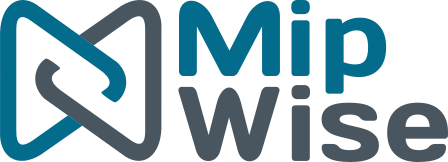Mip Manifest
This manifest is a compilation of years of experience from multiple people who have solved real-world problems using analytics in a diverse set of industries.
Therefore, these are key points to keep in mind every time we engage in a new project.
1. See big, start simple, go deep
You may have seen some variation of the quote “think big, start small, go deep”, which is often used by entrepreneurs.
“See big, start simple, go deep” is our version of that quote for solving challenging analytics problems.
See big is a call to understand the context of the problem. The industry, type of stakeholders involved, technologies constraints, etc. By seeing the big picture, we can build more relevant and robust solutions.
Approaching a complex problem with a complex solution is a recipe to get overwhelmed (unless we already have experience with that type of problem). Therefore, start simple. Consider not only starting with a simple solution approach but also with a simpler version of the problem itself.
Go deep to understand the heart of the problem and build a solution that exploits its properties. We can beat even the best generic solution in the market by exploiting the unique characteristics of the problem.
2. Relationship matters
What makes a good relationship?
For the relationship between tables, the primary keys are the answer (nerdy joke).
But when it comes to relationships with clients and sponsors, trust plays the role of the primary keys.
What builds trust? Transparency and open communication.
In particular, we should always remind ourselves that over-promising is a short-term strategy that we don’t play.
Instead, we acknowledge our edge and don’t fake it. Because if we do, sooner or later our clients will feel it and distrust our work, which makes the working environment unpleasant for everyone.
3. Clarity is power
We must ensure to understand the problem before attempting to solve it. Even the best solution is of no use if we solve the wrong problem.
A great way to ensure we understand the problem is to start by creating documentation. Start with some bullet points, a flow chart, a short description of the problem, a sample data set, or any combination of these. Then share it with your client. It’s always surprising to see how much clarity can come from such a simple exercise.
Make sure to have clarity about the solution approach as well, although it’s okay to change strategy during the game. Starting from the business problem and working backward is the best way to stay focused.
When not sure where to start, we begin by writing down an overview of the solution approach. It forces us to think hard about what needs to be done. One hour spent with this exercise can save us days of work in the long run.
4. Tidy, tested, and safe
Enterprise-grade analytics solutions must be tidy, tested, and safe.
Spaghetti code that has been tested on a single instance and that breaks when the user inputs dirty data is far from being considered a reliable solution and should never be deployed to a client.
We write tidy code with respect to our collaborators and to our future selves.
We test our solutions systematically with respect to our clients.
We make our solutions bulletproof against dirty data to ensure a good user experience and to avoid headaches for ourselves.
Visit the Tidy, Test, Safe website to learn more.
5. Share progress often
This is the best way to collect feedback early and adjust the course of things if needed. This is one of the reasons why we are big fans of the Agile methodology.
Keep in mind though that our ultimate goal is to make our clients successful, not just happy. So we need to make sure to not change our minds just to please our clients. We should always hear what the client has to say, but we must use our deepest wisdom to make the final call.
When we take responsibility and things go wrong, we can find the energy to fix them. When things go wrong because we trusted our client’s opinions more than our own expertise, we will blame them. That situation is not good for either of us.
But rather than confronting the client all the time, meet them where they are, educate them, and lead them in the right direction. In the worst case, you will have learned from them too.





